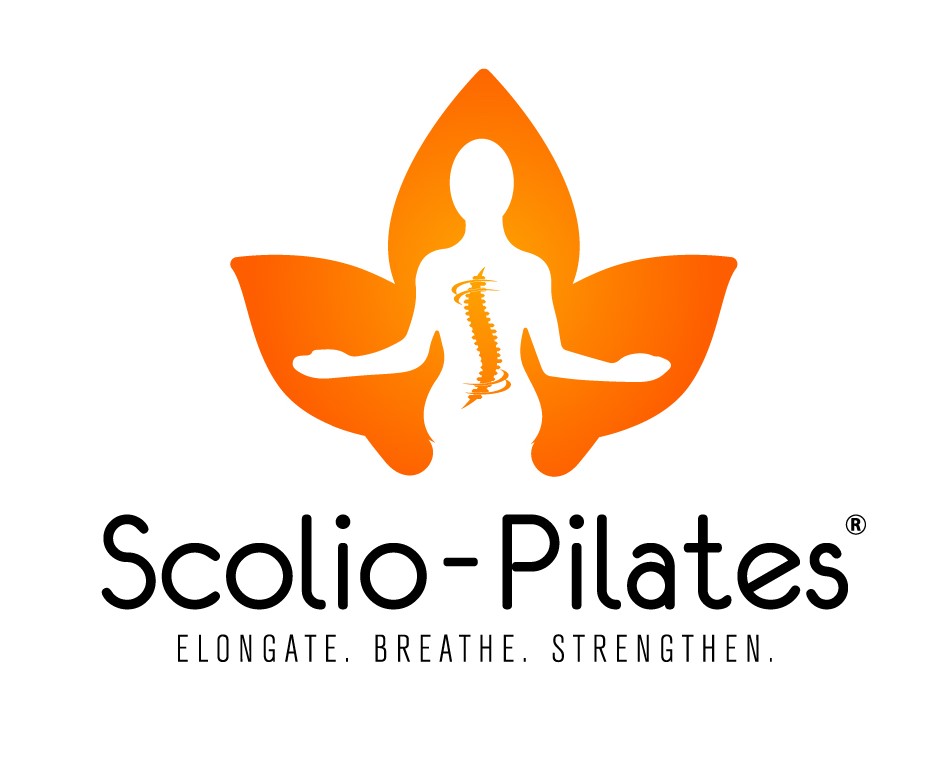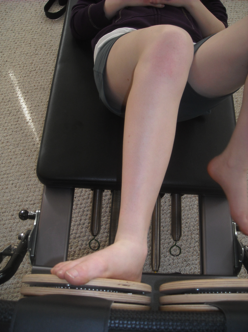I recently began working with a 15-year-old client with this condition. I had been helping the mother with her scoliosis using a 3-dimensional approach and the results have been remarkable. I think she (the mother) was hoping the same would be true for her daughter’s condition: coalition of the talus and calcaneus and the calcaneus and navicular. The coalition in this young girl’s case is bony. These three foot bones are fused and do not allow for normal range of motion.
Pain is present in any weight-bearing activities for this young lady; a 5-minute walk can be an excruciating exercise. A congenital disease present from birth (inherited from her father) the pain from this condition does not usually arise until adolescence as the bones are finalizing their growth, which has been exactly the case in this situation.
About the pic: The pic shows the effects of coalition on the lower extremity. The alignment seems greatly exaggerated but is where the alignment naturally goes when uncorrected. >>>>How Coalition of the Navicular and Calcaneus and Calcaneus and Talus affect the lower extremity alignment and muscles in this particular case.
- Since the coalition is present in both feet, both feet are flat.
- She is able to stretch the gastrox on a calf stretch block to an almost average degree.
- Initially, She was unable to stand and bend the knees more than 3-5 degrees before the feet roll laterally to compensate.
- The peroneals are tight (spasm?) as are the hip adductors, the knees are valgus, the feet externally rotate.
- The hip abductors are very weak.
- Most simply put, she can point and flex the foot at the ankle joint but that’s about it for range of motion. The motion of the talus in the mortise of the tibia is unaffected (dorsi and plantar flexion) but the forward motion of the talus on the calcaneus and the ability to supinate and pronate are greatly affected as are all the circular motions in between those ranges of motion.
What this client wants: To MOVE!
She is tired of being tethered by pain, so what do we do to get her going? Well, there are only a million and one tricks in any  Pilates instructor’s bag so obviously we can do all kinds of work that never touch the lower extremity. But when you are ready to tackle that, here’s are the exercises that I have focused on with this young lady:
Pilates instructor’s bag so obviously we can do all kinds of work that never touch the lower extremity. But when you are ready to tackle that, here’s are the exercises that I have focused on with this young lady:
- Hip Abduction (taking the leg away from the center-line). All shapes and sizes and reps. One of my favorites is just side-lying leg circles (and all the variations that go with it) on the mat. We also do side-lying single leg presses on the reformer using the footbar (watch foot alignment) and also side-lying leg work on the trap table using a leg spring.
- Standing. I have cut a mat (1/2″ thickness) into small triangles about the length of my hand. I put the point of the triangle underneath her foot between the 4 and 5th toes. From this position, I have her bend the knees. She can go about 1-2″ generally. While range of motion is small it is a great, great place to practice alignment. She activates the abductors to pull the knees into alignment. She drops the 1st metarsal (big toe knuckle) towards the floor to discourage rolling laterally. You can even see in this pic with all the corrections that without the knees bending at all, the 1st metatarsal is trying to pull away from the floor. It’s more exaggerated with the right foot.Pic>>
- Standing or seated. Throw a towel on the floor and have her grab it with her toes and drag it towards her using only the toes. Strenghens the arch
- Standing. Use the foot corrector to strengthen the arch.
- Stretching. Standing on the floor next to the reformer, face the carriage. One foot on the floor and one foot pressed up against the shoulder rest. One hand on the footbar and one hand on the carriage. Slide the carriage away for an inner thigh stretch.
- Stretching the arch of the foot.
This should help you get started. Let me know if you have any questions. K

